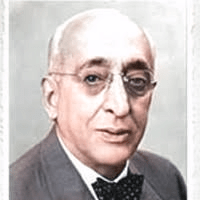Sir Tej Bahadur Sapru was the only non-Muslim leader who was willing to lend support to the Muslim cause. After the suspension of Jinnah-Gandhi talks, he wrote a letter to Gandhi and suggested to hold another session of the Conference. Later on he withdrew the suggestion and proposed that Gandhi should call a National Convention but he declined the proposal. Finally Sapru decided that the Standing Committee of the Non-Party Conference should appoint a committee that would examine and give a reasonable solution of the political problems of the country. The main idea was to understand the point of view of each party by establishing contacts with the leading leaders, so that the Committee could recommend a solution based on the views of all the parties. Although Gandhi accepted it, he said that the Committee should not comprise any representative of Congress, Muslim league, Hindu Mahasabha or any recognized party of the country.
On 19th November 1944 the Standing Committee met in New Delhi and resolved that the appointed Committee would try to hold talks with the leaders of all the parties and would present a solution within the two months to the Standing Committee of the Non-Party Conference. Moreover it would take all necessary steps to get that solution accepted by all the concerned parties. Sapru wanted to select those persons for the Committee who were neither politically bound nor they had publicly expressed their views about the communal problem. So he hoped that the Committee should consist of two former judges of the High Court and possibly one or two Englishmen. The Standing Committee met at Allahabad on 3rd December and named the members of the ‘Conciliation Committee’. The personnel of the Committee were to be: Sir Tej Bahadur Sapru as the Chairman, M.R. Jayaker, Bishop Foss Westcott, S. Radhakrishnan, Sir Homi Mody, Sir Maharaj Singh, Muhammad Yunas, N. R. Sarkar, Frank Anthony and Sant Singh. Sapru wrote to Quaid-i-Azam on 10th December explaining the cause of the ‘Conciliation Committee’ and asked him to meet the Committee. But Quaid-i-Azam in his reply on 14th December regretted that he could recognize neither the Non-Party Conference and its Standing Committee nor the ‘Conciliation Committee’ and its purpose to deal with the present political situation.
However, the proposals of the ‘Conciliation Committee’ were published on April 8, 1945. In its final session at Delhi the Committee unanimously passed fifteen resolutions dealing with future constitution of India. The main proposals were 1) Division of India would be opposed in any form or shape. 2) The constituent assembly would consist of 160 members for drafting the future Constitution of India. 3) Native states would be allowed to join the proposed Union of India as units. 4) List of fundamental rights will be incorporated in the future Constitution. 5) No province of British India may be allowed not to accede to the Union, nor may any unit whether a province or a state, which has acceded, be entitled to secede therefrom. 6) An independent ‘minority commission’ would be established to safeguard the rights and interests of the minorities. 7) Separate electorates would be abolished, and the constitution-making body, the central legislature and the central executive will be constituted on the basis of parity between the Hindus (other than scheduled castes) and the Muslims.
The report of the Committee also recommended that if the proposals were unacceptable to the various communities and parties, then the British Government should set up an interim government and proceed to establish Constituent Assembly for drafting the new Constitution on the basis of these proposals. The new constitution will be implemented by the parliament as soon as possible.
Although the ‘Sapru Proposals’ reflected the Congress mind, they were unrealistic as well. In 1942 the British Government had accepted the principle underlying the plan of Pakistan, by the Draft Declaration sent through Cripps. Moreover it had carried a provision according to which provinces were permitted to stay out of the Indian Union. Similarly, the issue of separate electorates had been placed beyond controversy for many years. But the ‘Conciliation Committee’ had again touched on these issues prone to make the situation more complicated for the Muslim League. In short the ‘Sapru Proposals’ were intended to substantiate the Congress stand and not to seek a solution of the problems of the Muslim minority.
This article was last updated on Monday, Jan 01, 2007






